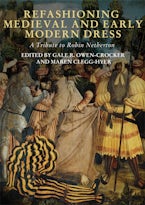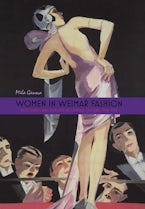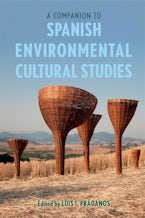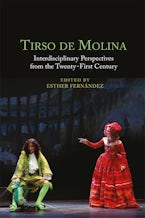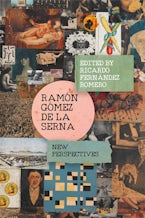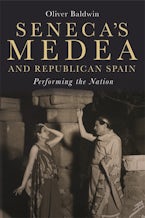
Title Details
220 Pages
23.4 x 15.6 cm
Series: Monografías A
Series Vol. Number:
392
Imprint: Tamesis Books
Fashion, Gender and Agency in Latin American and Spanish Literature
- Description
- Contents
- Author
- Reviews
In the last two decades, the glorification of sewing - whether involving needlework, tailoring, or fashion design - has thrived in Latin American and Iberian cultural works, particularly literature.
In the last two decades, the glorification of sewing - whether involving needlework, tailoring, or fashion design - has thrived in Latin American and Iberian cultural works, particularly literature. While fast fashion has relegated the handicraft to maquiladoras in the Global South, Spanish and Latin American authors have created protagonists whose skill with needle and thread allows them to break out of culturally confining roles and spaces. In this fictional realm, seamstresses and tailors enter exciting adventures as spies, peacemakers, or explorers, all facilitated by their artistry and expertise.
This book examines the depiction of women and the textile arts in contemporary Hispanic and Brazilian literature. Employing space and gender theories, the book explores how sewing, traditionally viewed as respectable only if practiced at home, gives agency and encourages self-reflection and mobility,allowing protagonists to transgress physical and socially prescribed limits. Texts analyzed include María Dueñas's El tiempo entre costuras (2009), César Aira's La costurera y el viento (1994), Pedro Lemebel's Tengo miedo torero (2001), Frances Ponte de Peebles's The Seamstress (2009), and children's literature. Encouraging readers to look behind garments to the agents of production, the book shows how contemporary authors, through their celebrations of an age-old skill, help to renew interest in sewing, tailoring, upcycling, and embroidery.
In the last two decades, the glorification of sewing - whether involving needlework, tailoring, or fashion design - has thrived in Latin American and Iberian cultural works, particularly literature. While fast fashion has relegated the handicraft to maquiladoras in the Global South, Spanish and Latin American authors have created protagonists whose skill with needle and thread allows them to break out of culturally confining roles and spaces. In this fictional realm, seamstresses and tailors enter exciting adventures as spies, peacemakers, or explorers, all facilitated by their artistry and expertise.
This book examines the depiction of women and the textile arts in contemporary Hispanic and Brazilian literature. Employing space and gender theories, the book explores how sewing, traditionally viewed as respectable only if practiced at home, gives agency and encourages self-reflection and mobility,allowing protagonists to transgress physical and socially prescribed limits. Texts analyzed include María Dueñas's El tiempo entre costuras (2009), César Aira's La costurera y el viento (1994), Pedro Lemebel's Tengo miedo torero (2001), Frances Ponte de Peebles's The Seamstress (2009), and children's literature. Encouraging readers to look behind garments to the agents of production, the book shows how contemporary authors, through their celebrations of an age-old skill, help to renew interest in sewing, tailoring, upcycling, and embroidery.
Introduction: Glorifying the Needle and Thread
On Pins and Needles: Hypermodernity and Hyperclothing Ourselves
The Perfect Pattern: Dressmaking as a Political Tool in María Dueñas's El tiempo entre costuras
Lining with Surrealism: Spaces and Stitches in César Aira's La costurera y el viento
Unraveling Gender and Sexual Confinements in Pedro Lemebel's Tengo miedo torero
An Honest Measuring Tape: Peripheral Places in Frances de Pontes Peebles's The Seamstress
Tailoring Peace and Purpose: Sartorial Representations in Children's Literature
Conclusion: Final Notations: Toward Consumer Consciousness
On Pins and Needles: Hypermodernity and Hyperclothing Ourselves
The Perfect Pattern: Dressmaking as a Political Tool in María Dueñas's El tiempo entre costuras
Lining with Surrealism: Spaces and Stitches in César Aira's La costurera y el viento
Unraveling Gender and Sexual Confinements in Pedro Lemebel's Tengo miedo torero
An Honest Measuring Tape: Peripheral Places in Frances de Pontes Peebles's The Seamstress
Tailoring Peace and Purpose: Sartorial Representations in Children's Literature
Conclusion: Final Notations: Toward Consumer Consciousness
"Delving into diverse texts that bring together several disciplines, Saunders documents the cultural power of fashion hegemony within the framework of global capitalism. Ultimately this insightful and beautifully written book locates new spaces from which to re-affirm the tensions inherent to fashion, gender and agency in the acquisition of cultural power." REGINA A. ROOT, Professor of Hispanic Studies and Specialist in Latin American Fashion, William & Mary
Hardcover
9781855663428
February 2021
£75.00 / $115.00
Ebook (EPUB)
9781800101272
February 2021
£24.99 / $29.95
Ebook (EPDF)
9781800101265
February 2021
£24.99 / $29.95
Title Details
220 Pages
2.34 x 1.56 cm
Series: Monografías A
Series Vol. Number:
392
Imprint: Tamesis Books


